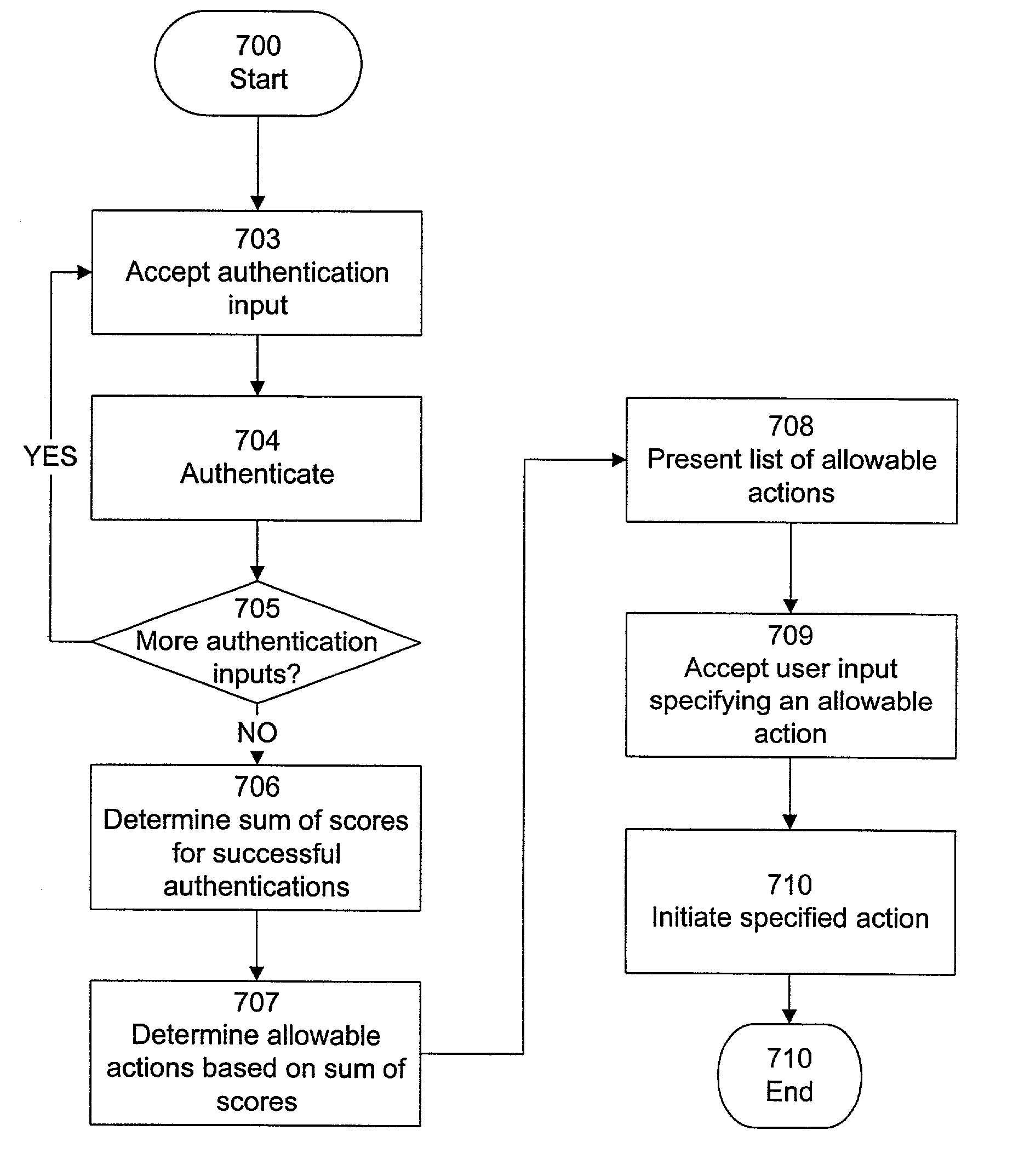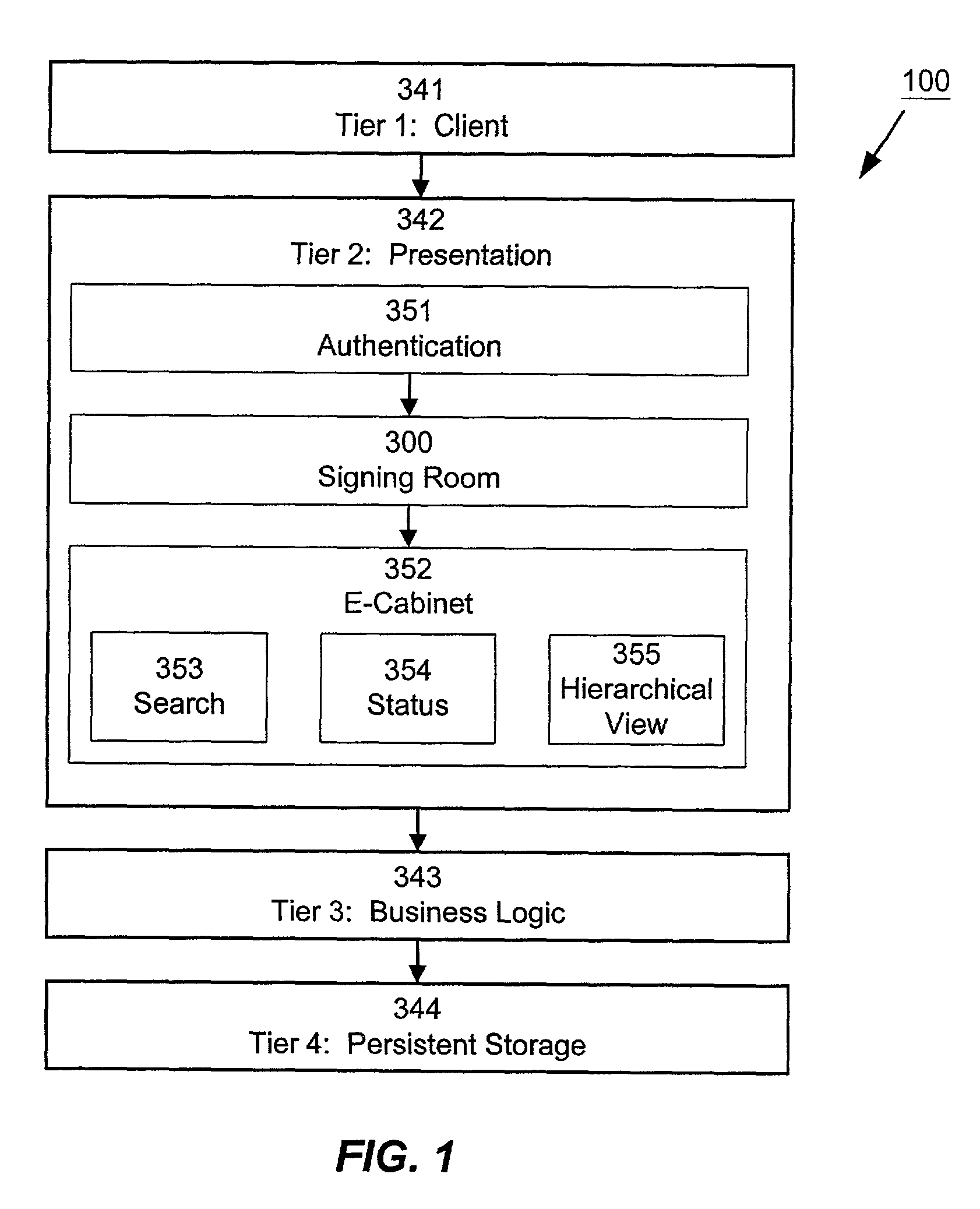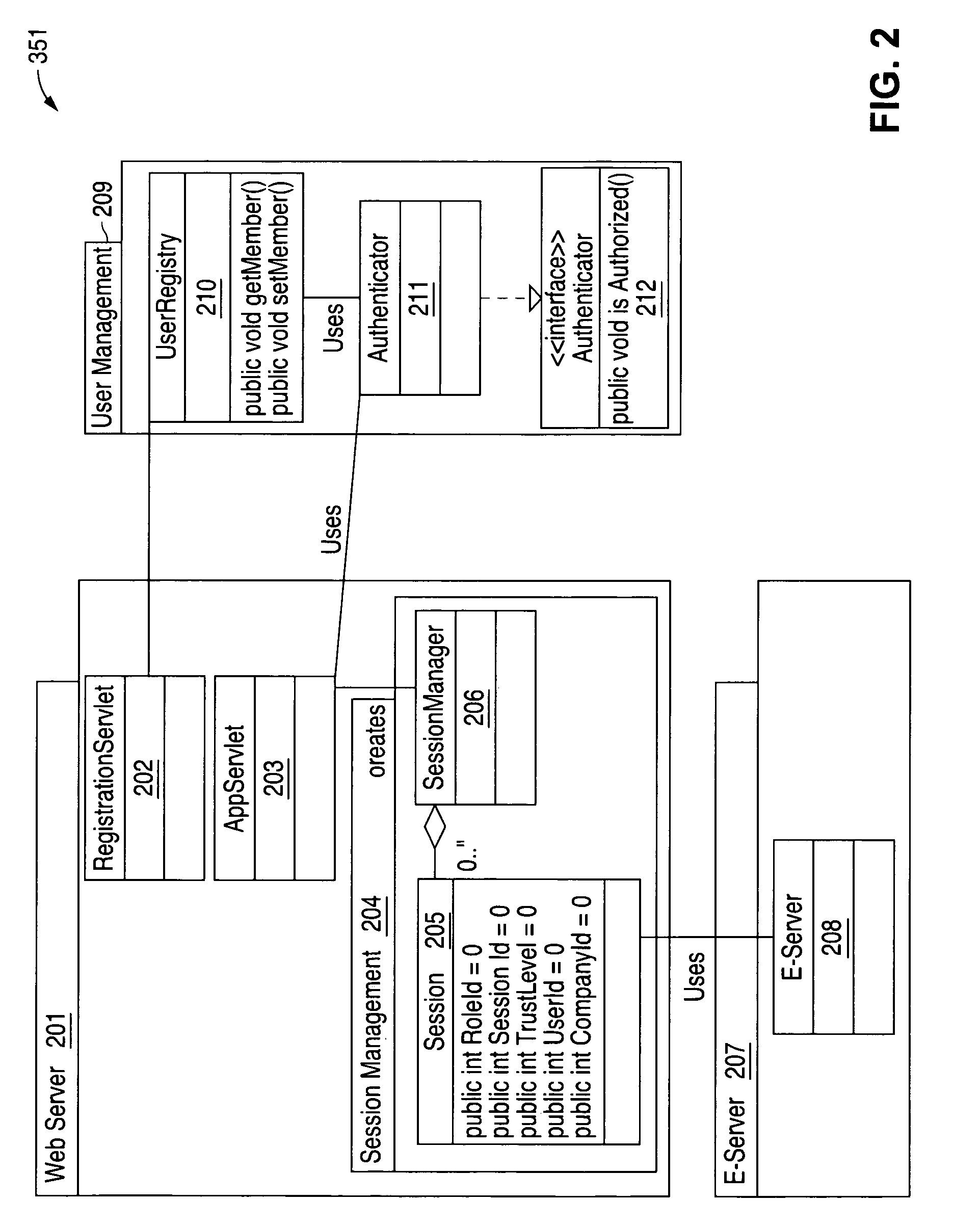Variable trust levels for authentication
a variable trust and authentication technology, applied in the field of authentication, can solve the problems of inflexible conventional authentication schemes, access will be denied, and the consequences of incorrect authentication are more severe, and achieve the effects of high score, considerable flexibility in authentication methods, and greater flexibility
- Summary
- Abstract
- Description
- Claims
- Application Information
AI Technical Summary
Benefits of technology
Problems solved by technology
Method used
Image
Examples
Embodiment Construction
[0036]For illustrative purposes, the preferred embodiment of the present invention is described in the context of authentication of a user for purposes of document access in an online environment. More specifically, the following description and accompanying drawings depict the use of the invention in the context of a Digital Handshake Server (DHS) so as to allow users to be authenticated based upon a series of authentication methods, in order to determine the level of trust that will be associated with each user within a particular session. The trust level for a user is then used to determine which documents the user will be permitted to access, and what kinds of actions the user will be permitted to take with respect to the documents. Those skilled in the art will recognize that the particular features of the present invention are not limited to a particular environment, software application, or network configuration, and that the following description is merely intended to be ill...
PUM
 Login to View More
Login to View More Abstract
Description
Claims
Application Information
 Login to View More
Login to View More - R&D
- Intellectual Property
- Life Sciences
- Materials
- Tech Scout
- Unparalleled Data Quality
- Higher Quality Content
- 60% Fewer Hallucinations
Browse by: Latest US Patents, China's latest patents, Technical Efficacy Thesaurus, Application Domain, Technology Topic, Popular Technical Reports.
© 2025 PatSnap. All rights reserved.Legal|Privacy policy|Modern Slavery Act Transparency Statement|Sitemap|About US| Contact US: help@patsnap.com



